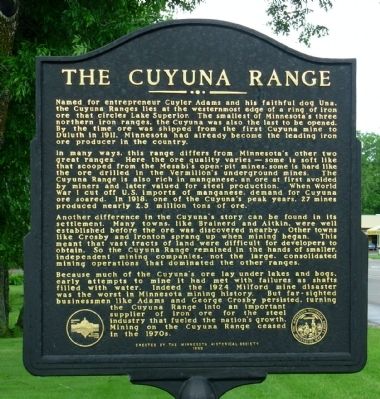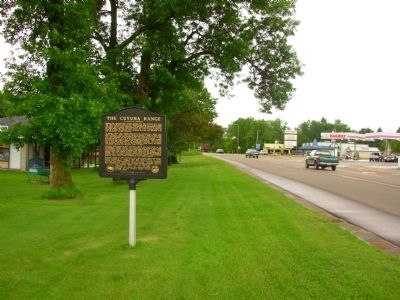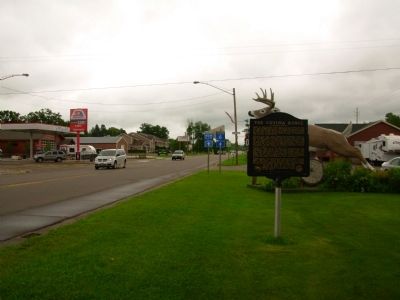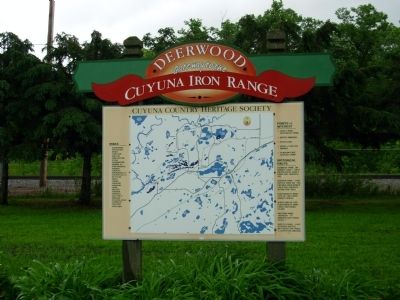Deerwood in Crow Wing County, Minnesota — The American Midwest (Upper Plains)
The Cuyuna Range
In many ways, this range differs from Minnesota’s other two great ranges. Here the ore quality varies — some is soft like that scooped from the Mesabi’s open-pit mines, some hard like the ore drilled in the Vermillion’s underground mines. The Cuyuna Range is also rich in manganese, an ore at first avoided by miners and later valued for steel production. When World War I cut off U.S. imports of manganese, demand for Cuyuna ore soared. In 1918, one of Cuyuna’s peak years, 27 mines produced nearly 2.5 million tons of ore.
Another difference in the Cuyuna’s story can be found in its settlement. Many towns, like Brainerd and Aitkin, were well established before the ore was discovered nearby. Other towns like Crosby and Ironton sprang up when mining began. This meant that vast tracts of land were difficult for developers to obtain. So the Cuyuna Range remained in the hands of smaller, independent mining companies, not the large, consolidated mining operations that dominated the other ranges.
Because much of the Cuyuna’s ore lay under lakes and bogs, early attempts to mine it had met with failure as shafts filled with water. Indeed the 1924 Milford mine disaster was the worst in Minnesota mining history. But far-sighted businessmen like Adams and George Crosby persisted, turning the Cuyuna Range into an important supplier of iron ore for the steel industry that fueled the nation’s growth. Mining on the Cuyuna Range ceased in the 1970s.
Erected 1999 by The Minnesota Historical Society.
Topics and series. This historical marker is listed in this topic list: Industry & Commerce. In addition, it is included in the Minnesota Historical Society series list. A significant historical year for this entry is 1911.
Location. 46° 28.425′ N, 93° 53.951′ W. Marker is in Deerwood, Minnesota, in Crow Wing County. Marker is at the intersection of East Front Street (State Highway 6 / 210) and Maple Road, on the right when traveling east on East Front Street. Touch for map. Marker is in this post office area: Deerwood MN 56444, United States of America. Touch for directions.
Other nearby markers. At least 4 other markers are within 13 miles of this marker, measured as the crow flies. Aitkin County Courthouse and Jail (approx. 9.9 miles away); Mille Lacs Lake (approx.
12.9 miles away); William A. Tauer (approx. 12.9 miles away); Lake Mille Lacs Walleye (approx. 13 miles away).
Credits. This page was last revised on June 16, 2016. It was originally submitted on June 29, 2011, by Paul Fehrenbach of Germantown, Wisconsin. This page has been viewed 1,051 times since then and 19 times this year. Photos: 1, 2, 3, 4. submitted on June 29, 2011, by Paul Fehrenbach of Germantown, Wisconsin. • Bernard Fisher was the editor who published this page.



